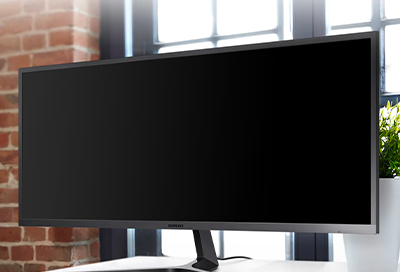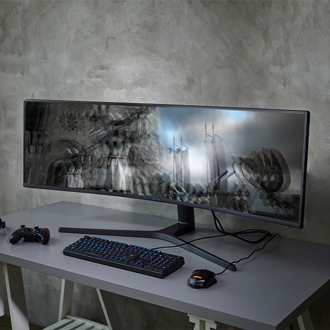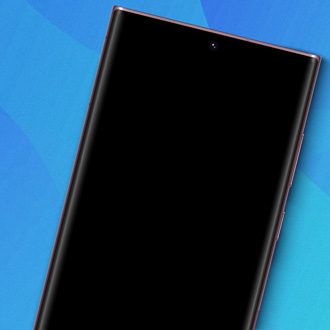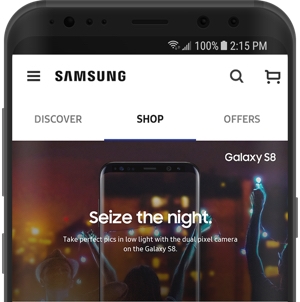The display is blank on my Samsung monitor

Checkpoint
Check the monitor's source and connections
A loose or defective cable can easily cause a blank screen, even if the cable appears plugged in or was previously working.
If the issue continues or if the cable is damaged, replace the cable. Check your user manual to determine the best cable to use.
Most monitors will automatically select the source that is sending a video signal, but sometimes the wrong one will be selected. Other times, you will need to manually select it. You can change the source with the buttons on the monitor or in the on-screen menu. See your user manual for instructions, if needed.
Make sure the source matches the port on the back of the monitor that your external device is connected to.
Check for updates for the monitor
For this step, connect the monitor that's experiencing issues as a second monitor, if it isn't already. You can use a laptop with a built-in screen, or a computer with another monitor that's already connected and working. Make sure you use a cable that you know works, or a new cable. Also make sure that the monitor is turned on to be used as a second monitor, and the "only on one screen" setting is not enabled.
- If the monitor works this way right away, the good news is that the monitor doesn't need service. You can also skip step 2 and head to step 3.
- If the monitor is still blank even when connected as a second monitor, try step 2 before step 3.
If the monitor doesn't come on immediately when connected as a second screen, or if you don't have a second screen to use, try booting into Safe Mode anyway and see if the monitor will work in Safe Mode. Sometimes the monitor will work in Safe Mode even if it won't work normally, which will allow you to check for updates.
- If the monitor works in Safe Mode, either as the only screen or as a second screen, then your monitor doesn't need service, and step 3 may help you to get the monitor to work in normal mode on the device it was originally connected to.
To get into Safe Mode:
- On Windows 10/11, see Microsoft's article for the proper method.
- On earlier versions of Windows, press F8 repeatedly as the computer is booting, and then use the provided menu.
- On a Mac, press and hold the Shift key until the Apple logo appears.
- Update the graphics drivers on your computer. The best way to do this is to visit the manufacturer's website. Depending on the components in your computer, you may use nVidia, AMD, or Intel.
- Adjust the resolution and refresh rate to the monitor's native settings. If they are currently set to something the monitor cannot display, it may result in a blank screen instead. If this is the cause of the issue, using the native settings will fix it.
- Check for a firmware update. Although most monitors never need a firmware update, if one is available for your model, it can be downloaded from our Download Center. In some cases, a firmware update is known to fix a blank screen issue.
If the monitor works at any point, then the monitor does not need service. Examples of when it might work even if it doesn't work in normal mode:
- When booting before the operating system loads
- In Safe Mode
- When used as a second monitor
- When used with a different device
If the monitor works in any of these situations, but updates do not resolve the issue for normal mode, or there are no updates available, then contact the manufacturer of the PC or device that the monitor doesn't work with. If it's a custom built PC, contact the manufacturer of the graphics card or motherboard that the monitor is plugged into.
Run a Self Diagnosis test on your monitor
Visit our Support Center to request service.
If the Self Diagnosis test succeeded and there was no issue, then service is not required. The issue is with either the device the monitor is connected to, or the cable being used to connect it. Restart troubleshooting from the beginning, and if the issue continues, contact the manufacturer of the PC or device that the monitor doesn't work with. If the PC is custom built, contact the manufacturer of the graphics card or motherboard the monitor is plugged into.
Connect a different device to the monitor
As a final step, if you haven't already, try connecting a different device to the blank monitor. Make sure to use a cable you know works. Depending on the type of cables, adapters and devices you have available, you may be able to connect the monitor to a game console, phone or tablet, or PC.
If the monitor works with any other device, then service is not required, and the issue is with the original connected device. Contact its manufacturer for further assistance. For a PC that is custom built, contact the manufacturer of the graphics card or motherboard the monitor is plugged into.



Thank you for your feedback! Your comment has been submitted.
Contact Samsung Support


- Home Home
- Support Support
- troubleshoot troubleshoot
- The display is blank on my Samsung monitor The display is blank on my Samsung monitor
